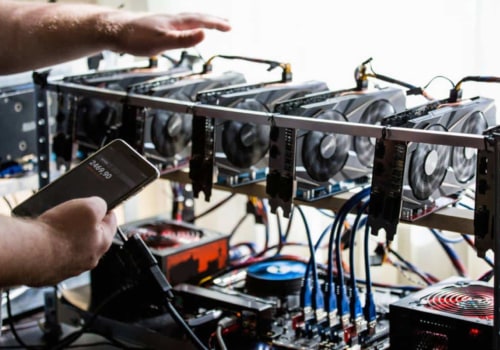What Are Crypto Trading Bots?
Cryptocurrency trading bots are incredibly nifty tools that can be used by both beginners and seasoned traders alike to amplify trading outcomes. Their primary purpose is to execute trading orders according to a set of criteria previously entered by the trader.
Crypto trading bots are useful because they are able to monitor charts and price movements around the clock, allowing the trader to do other things while their bot remains hard at work in the background. Indeed, trading bots ensure that no good trading opportunity is ever missed even while the trader is asleep or busy with other life obligations.
A powerful crypto trading bot, combined with the right dose of manual intervention by the trader, can greatly enhance your trading portfolio, as well as maximize profit generation and overall trading outcomes.
How to Create Your Own Crypto Trading Bot
The
capabilities that you want your trading bot to have will determine the coding language
you need to use in order to build it. Generally speaking, it is preferable to utilize a
coding language that is used by many different crypto trading bots for
2022,
for example. The coding language you end up going for also needs to be readily scalable
and modifiable.
With
all of this in mind, the most widely used programming languages for the creation of
crypto trading bots have so far been Python and JavaScript.
Steps to Creating a Crypto Trading Bot
-
Choose
a programming language.
As previously stated, it is best to choose a coding language that you have a solid
grasp of. An added benefit of using well-known programming languages is that you can
easily enlist the assistance of other programmers to write or fix the code for
you.
-
Connect
to crypto exchanges. Obtaining
the APIs your bot needs to access the exchanges you want it to trade on can be done
through dedicated pages offered by the majority of major cryptocurrency exchanges
(such as Kraken and Coinbase). Just enter the name of your chosen exchange and the
term ‘API’ into a search engine and you should get the necessary links.
-
Create
accounts on exchanges.
Be aware that the account registration process can vary across crypto exchanges. While
some exchanges permit fully anonymous trading, others have comprehensive KYC (Know
Your Customer) requirements which means that new users need to provide personal
information that needs to be reviewed and approved beforehand.
-
Construct
the bot’s algorithm.
Putting this step under a bullet point actually feels a little funny, as this is
arguably the most significant part of the entire process. This will also take the most
time, effort and skill to complete. Coding the algorithms that the bot will use to
interpret market data is critical to the success of its performance. If you’re not
100% certain of your own coding expertise, this would be a good time to bring in an
expert developer (or even a team of developers) to help create a viable algorithmic
model that the bot will be using to track and analyze market data.
Test
the bot before live use.
Testing ensures that your bot works properly and can handle the massive amounts of data
variations it will be analyzing. It also allows you to fine-tune the bot’s performance
before a full-fledged release.
Choose a programming language. As previously stated, it is best to choose a coding language that you have a solid grasp of. An added benefit of using well-known programming languages is that you can easily enlist the assistance of other programmers to write or fix the code for you.
Connect to crypto exchanges. Obtaining the APIs your bot needs to access the exchanges you want it to trade on can be done through dedicated pages offered by the majority of major cryptocurrency exchanges (such as Kraken and Coinbase). Just enter the name of your chosen exchange and the term ‘API’ into a search engine and you should get the necessary links.
Create accounts on exchanges. Be aware that the account registration process can vary across crypto exchanges. While some exchanges permit fully anonymous trading, others have comprehensive KYC (Know Your Customer) requirements which means that new users need to provide personal information that needs to be reviewed and approved beforehand.
Construct the bot’s algorithm. Putting this step under a bullet point actually feels a little funny, as this is arguably the most significant part of the entire process. This will also take the most time, effort and skill to complete. Coding the algorithms that the bot will use to interpret market data is critical to the success of its performance. If you’re not 100% certain of your own coding expertise, this would be a good time to bring in an expert developer (or even a team of developers) to help create a viable algorithmic model that the bot will be using to track and analyze market data.
Pros and Cons of Using Cryptocurrency Bots
Whether
you choose to use a premade trading bot or build your own, the benefits of using one are
numerous, and they include:
-
Non-stop
trading.
Cryptocurrency trading bots operate 24 hours a day, seven days a week, making
potentially profitable decisions for you even while you sleep.
-
Quick
responses.
Given the volatility of the cryptocurrency market, taking too long to complete a
transaction may be detrimental to the outcome of a trade. Because crypto trading
bots execute orders quickly, the risks of missing out due to slow reactions are
greatly reduced.
-
No
emotions involved.
The cryptocurrency market is so unpredictable, some traders might fall into the trap
of panicking or becoming overconfident. Emotionally heated trading can lead to poor
judgment over time. One of the primary benefits of crypto trading bots is that they
are not affected by the amount of money involved.
The
cons of using crypto trading bots are predominantly related to the following
issues:
-
Failed
trading outcomes from lack of human intervention.
It is not advisable to leave your bot on its own for days on end. The success of
your trading strategy depends on finding the right balance between automated trading
and manual tweaks.
-
Security.
Trading bots can be an easy target for hackers, and the field of automated trading
represents fertile ground for scammers to create sham platforms and promote them as
real trading software in order to gain access to your wallet and/or get you to
deposit money. Luckily, scams such as this Bitcoin
Lifestyle trading bot
can easily be detected when you know what to look out for.
-
Connection
failures. An
order made by the trading bot may not be sent to the exchange if your internet
connection breaks. You may not even know that your bot is unable to make
transactions for an extended period of time, thus missing out on multiple excellent
opportunities.
Non-stop trading. Cryptocurrency trading bots operate 24 hours a day, seven days a week, making potentially profitable decisions for you even while you sleep.
Quick responses. Given the volatility of the cryptocurrency market, taking too long to complete a transaction may be detrimental to the outcome of a trade. Because crypto trading bots execute orders quickly, the risks of missing out due to slow reactions are greatly reduced.
No emotions involved. The cryptocurrency market is so unpredictable, some traders might fall into the trap of panicking or becoming overconfident. Emotionally heated trading can lead to poor judgment over time. One of the primary benefits of crypto trading bots is that they are not affected by the amount of money involved.
Failed trading outcomes from lack of human intervention. It is not advisable to leave your bot on its own for days on end. The success of your trading strategy depends on finding the right balance between automated trading and manual tweaks.
Security. Trading bots can be an easy target for hackers, and the field of automated trading represents fertile ground for scammers to create sham platforms and promote them as real trading software in order to gain access to your wallet and/or get you to deposit money. Luckily, scams such as this Bitcoin Lifestyle trading bot can easily be detected when you know what to look out for.
Connection failures. An order made by the trading bot may not be sent to the exchange if your internet connection breaks. You may not even know that your bot is unable to make transactions for an extended period of time, thus missing out on multiple excellent opportunities.









